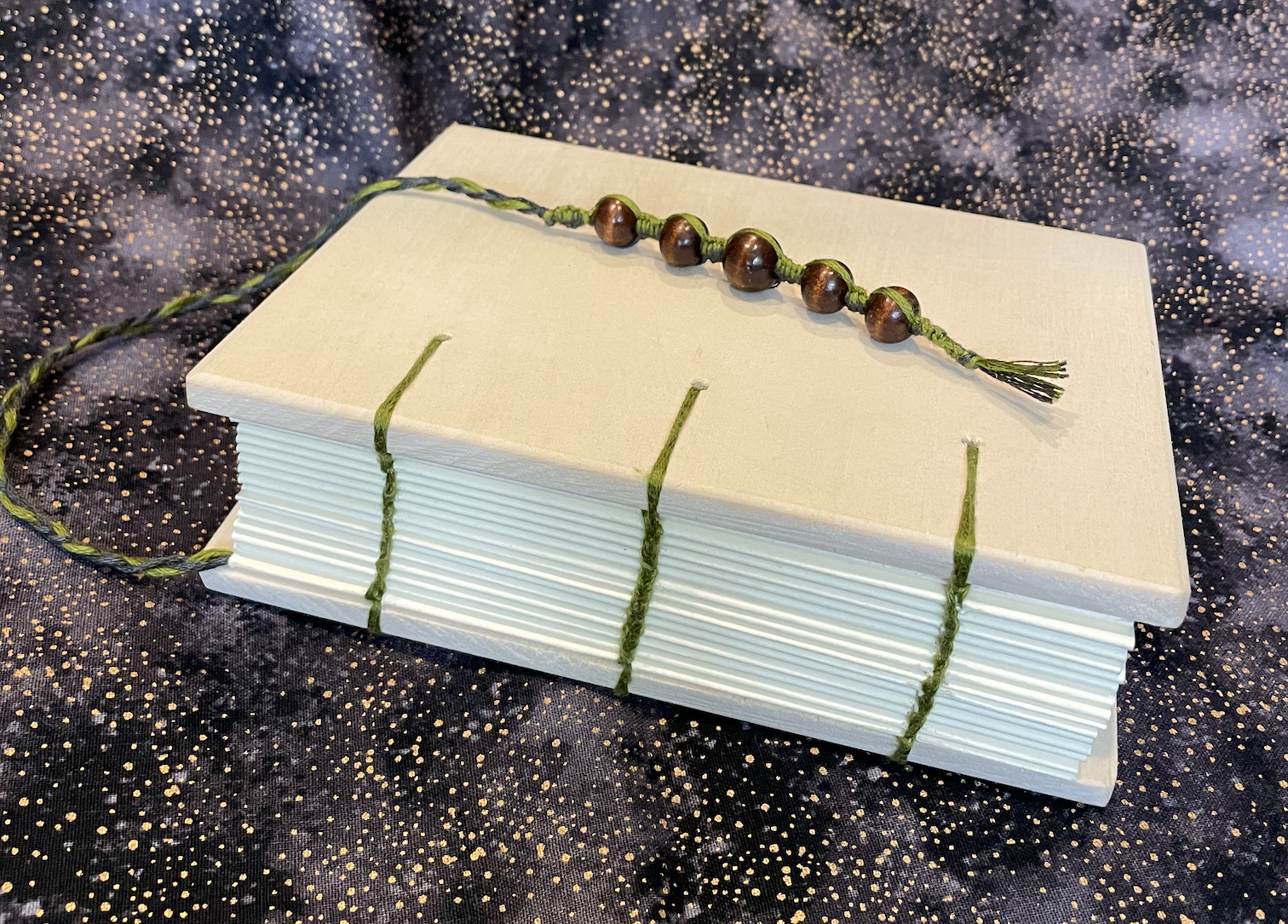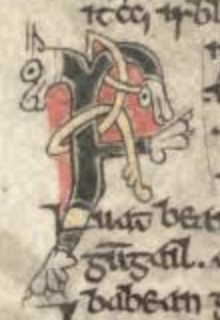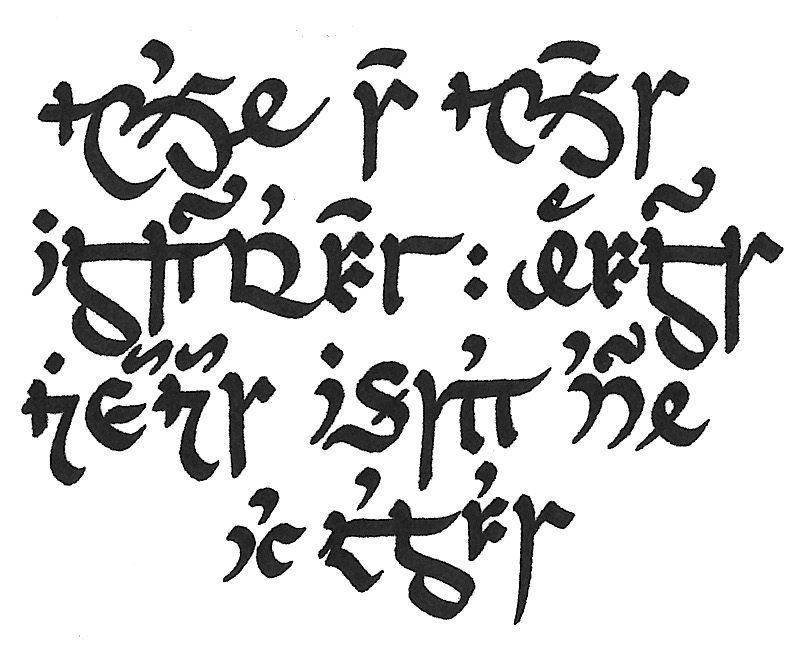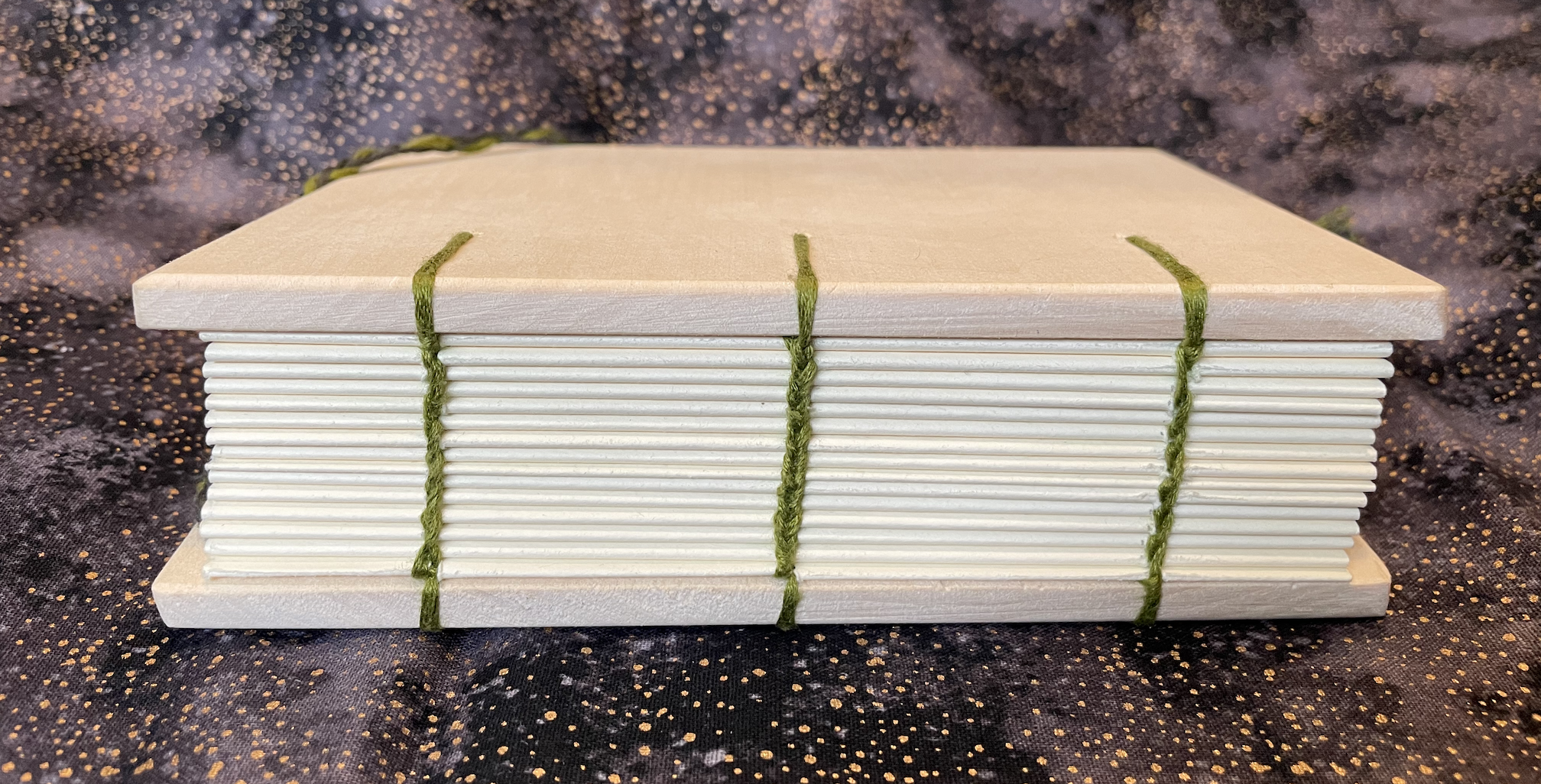Sylvan's Universal Anthology

Sylvan's Universal Text Anthology is a work of creative anachronism, involving conlanging, illustration, typesetting, bookbinding. It is also intended as a ritual object, and celebration of various texts I find highly rereadable.
Goals
The seed of the Universal Anthology project was the desire for a personalized reference material: everything from a table of baking measurements, to a selection of Lovecraft stories, to an abridged Cherokee reference grammar. As I tried to list everything I wanted, the size of the project snowballed out of control. This step, though, did help me figure out what I really wanted from UA: a personal holy book.
I'm a medieval reenactor, specializing in calligraphy and bookbinding. I seriously enjoy and derive meaning from decorating texts, reciting formulæ, wearing amulets, and observing rituals. I especially enjoy any of these things done in a special secretive language. However, I have no interest in being a part of any organized religion. You might see how this poses a problem for me. I decided that what I really wanted from the Universal Anthology was an outlet for ritual urges: Meditation, reassurance, advice, and intentional time away from electronic devices.
Texts
Horace's Ode 1.11
Carpe diem; quam minimum credula postero. (Seize the day; trust as little as possible in the future.) I became attached to this poem as soon as I read the whole thing, not just the famous snippet. The poem in its entirety is about the uncertainty of life, "whether Jupiter has given us many more winters, or if this is the last." Horace says it's actually forbidden to know this, and it's much better to drink wine and take what comes, rather than try "Babylonian numbers" (oracles) to predict the future. Also, it takes me about 35 seconds to recite this poem once. Five times is about as long as it takes to steep a pot of black tea, so this poem is a part of my morning ritual.
Aeneid, Book 1, Lines 189-203 - Vergil
Forsan et haec olim meminisse iuvabit. (Perhaps even this will one day be pleasing to remember.) This was another snippet I needed at first sight. Aeneas and crew have just washed up on the shore of North Africa, but Aeneas reminds them that they've handled worse already, including monsters like Scylla and the Cyclops. This, too, will have its end. I think about this one when I'm anxious or getting down on myself, because it doesn't have to be about literal war and shipwreck to be true.
Carmina IV & X, Archipoeta
Mihi numquam spiritus prophetiae datur, nisi prius fuerit venter bene satur. (I never get the spirit of prophecy unless I have a full belly.) The "Archpoet", whose birth name is lost to history, lived in medieval Germany and wrote many, many lines like the one above, celebrating feasting and love and poking fun at the Church. The meter can be sung to the tune of Yankee Doodle. I haven't actually read these all the way through; my goal is to sit down with a Latin lexicon and translate them slowly and thoroughly, then see if they hold up well enough for inclusion in Universal Anthology 2.
Catullus 32
Sed domi maneas paresque nobis novem continuas fututiones. This is Ancient Roman sexting. That's all. But in grad school, we spent a period discussing whether today's English translator has to keep "I'm pushing through my tunic and cloak" or if it's acceptable (even preferable?) to refer to modern clothing items. I think it depends on your audience.
Lines Composed a Few Miles above Tintern Abbey, On Revisiting the Banks of the Wye during a Tour. July 13, 1798 - Wordsworth
Five years have past; five summers, with the length / Of five long winters! and again I hear / These waters, rolling from their mountain-springs / With a soft inland murmur.—Once again / Do I behold these steep and lofty cliffs... This one hits me right in my feelings about rurality and the outdoors, where I grew up and where I enjoy hanging out whenever I can.
Hávamál (The Sayings of the High One), from the Poetic Edda
Long is and indirect the way to a bad friend's, though by the road he dwell; but to a good friend's the paths lie direct, though he be far away. I felt that a replacement holy text needed a chapter of wisdom literature. These sayings, attributed to Odin, are all practical advice on how to deal with work, friends, love, and danger. I wish this translation were a bit more modern, but that's what you get when you worki within the public domain.
The Voyage of St. Brendan the Abbot, Year 1
... Then the brothers brought out meat and fish, seasoned it with salt, and made a fire to cook it. When the fire had grown large with all the wood they had put on it, and the pot had begun to boil, the island itself began to writhe beneath them. The brothers ran for the boat, begging their abbot to save them. He reached out and pulled them in, and they abandoned everything they had brought ashore. Looking back, they saw the island dive into the ocean. St. Brendan is my namesake, and the Voyage is a fantastic adventure narrative. I also find it interesting for its portrayal of asceticism, seeking out and coping with hunger, thirst, and prolonged hard work. I did this translation from the Latin myself.
"SCP-2845" by Djoric, from the SCP Wiki. Source. Licensed under CC-BY-SA.
Rituals do not work because of some underlying laws, such as those that science operates on. Rituals work because they are rituals. They work because an arbitrary set of criteria has been met with exacting care. The SCP Foundation is home to some of the best weird science fiction on the internet. I selected this particular document because of the quote above, and the rest of the Statement from containment consultant [REDACTED] to Site Director Bell. It's kind of the manifesto for why Universal Anthology exists, because of the power and attractiveness of ritual practice. Granted, the Statement is primarily concerned with how best to secure and contain a giant extraterrestrial deer god who turns people into telepathic flesh pillars, but that doesn't mean it isn't true.
The Call of Cthulhu - HP Lovecraft
The most merciful thing in the world, I think, is the inability of the human mind to correlate all its contents. ... The sciences, each straining in its own direction, have hitherto harmed us little; but some day the piecing together of dissociated knowledge will open up such terrifying vistas of reality ... that we shall either go mad from the revelation or flee from the deadly light into the peace and safety of a new dark age. Probably the single most famous story of cosmic horror, and for good reason. I feel like HP was on the same track as Horace with the "to know is forbidden" angle, but HP was just far less healthy about it. The thing I really love about Lovecraft, though, is his imagery, particularly of scenery. The Shadow over Innsmouth and The Dunwich Horror are my favorites, but both too long for this codex.
Decoration
The UA decorations are based on the Urnes Style, found on Norse runestones, and on the zoomorphic initials found in medieval Irish manuscripts.


Irish Script on Screen.

The UA decorations are not done in Norse runes or Latin letters, but rather in alphabets I created. The serpents that form part of the interlace are Tornajras script, belonging to the Tornajras language. The runes along their length are my personal litteræ ignotæ ("unknown letters"), and are only set up to write English. There is a full key to my litteræ ignotæ in the back of UA.
The title page of the book also has a book curse, written in a more calligraphic style of the same litteræ ignotæ. It is based off a curse taken from an actual medieval manuscript, and reads (in Latin) "if anyone steals it, may he come down with the falling sickness and fever."

Typesetting

I did the typesetting using Pages, with the main body in Garamond and the headings in Vespasian, by Feòrag. Then, I formatted the text into gatherings of sixteen pages each using this web app. The book is a "quarto", that is, four pages per side of an 8.5x11 sheet.
Binding

UA is bound in Coptic stitch, using embroidery floss and 1/2" basswood boards. I like embroidery floss for Coptic bindings because of the wide range of colors that can show up on the exposed chain stitches. Basswood is very easy to work with a small saw and sandpaper.
Next Steps
I had more texts I wanted to include in UA, but when I printed everything out and folded the signatures, it came out much thicker than expected. I might have to do UA2 in a larger size. And there will be a UA2; it's a living document that will change according to my needs and interests. At the very least, UA2 will include a reference of Tornajras, my personal conlang. I also want to explore fabric- or leather-covered bindings, maybe with embroidery or metal fixtures. UA2 will be even more heavily decorated and illustrated. I'm considering formatting it more like a medieval manuscript, with decorated capitals and incipits, illustrations on empty lines, marginalia, etc. Someday, I might turn UA into a calligraphy project, but I will need to be absolutely sure of all the texts at that point.